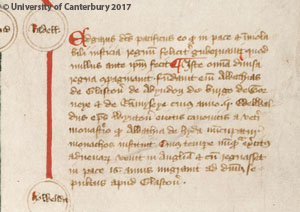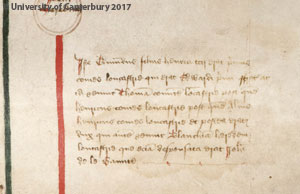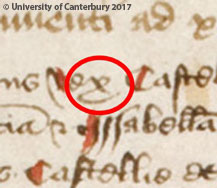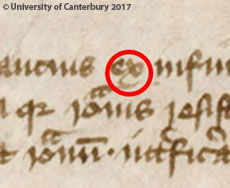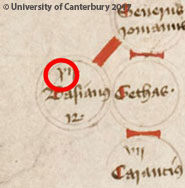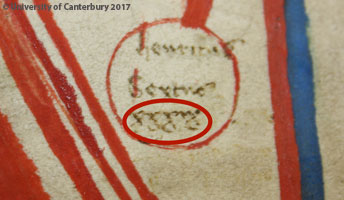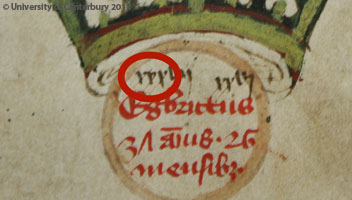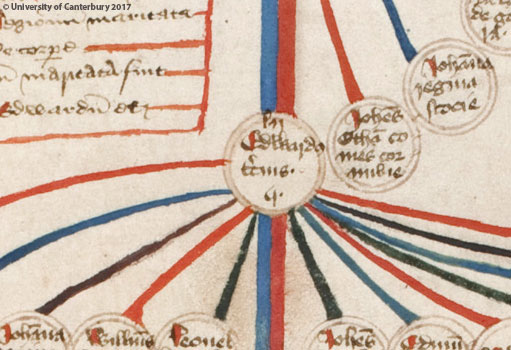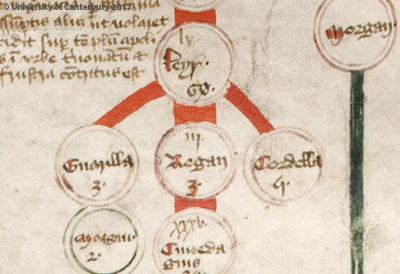Between 1433 and 1463, a series of additions were made to the numerals that appear in the original version of the Canterbury Roll. These were made by an otherwise unknown – and until 2016 unnoticed – scribe.
The Roll’s genealogical tree is made up of a number of roundels, each of which contains the name of a noble or royal family member. If the individual in question was a British or English ruler, their roundel typically included the length of their reign. The original Lancastrian Scribe wrote these regnal years in Indo-Arabic notation. This notation, both in the roundels and frequently in the accompanying commentary, was translated into Roman numerals by a second hand, dubbed here the Roman Numerals Scribe.
Identifying a New Scribe
The Roman Numerals Scribe was identified through a careful examination of letter formation. The majority of the Roll was written by the Lancastrian Scribe in a script closely resembling 14th-century "English Cursiva Documentary". A dramatic shift of script to something closely resembling "Secretary Cursive Media" marks the entrance of the Yorkist Scribe who transformed the manuscript into a piece of Yorkist propaganda. Both scribes were first identified by Arnold Wall.

